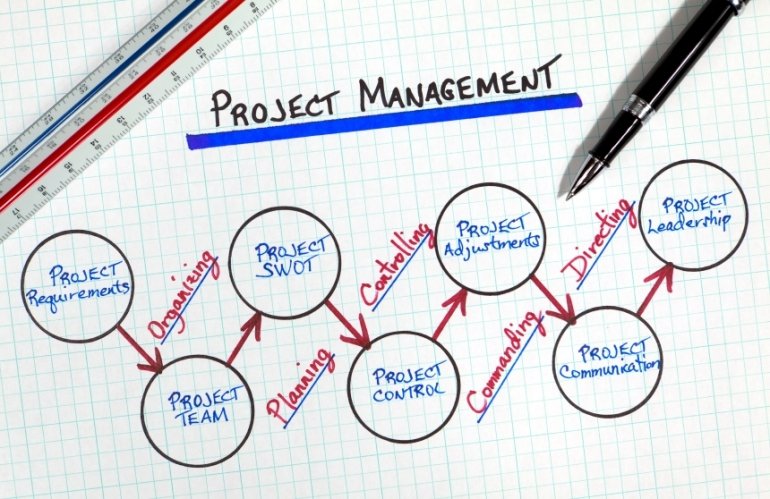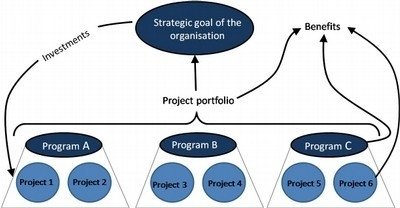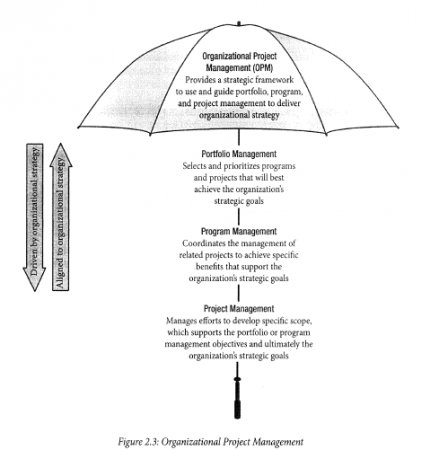Goal abandoned
The author does not write in the goal 10 years 9 months 4 days
Project Management Professional
The Certificate in Project Management will give me the theoretical background and practical knowledge and skills I need to succeed in my career and meet challenges in the industry.
PMI PMP gives the greatest return on a project manager’s career
PMP® + MICROSOFT® PROJECT 2013 + MICROSOFT® EXCEL® 2013 FOUNDATION + MICROSOFT® EXCEL® 2013 INTERMEDIATE ONLINE TRAININGPMP® + MICROSOFT® PROJECT 2013 + MICROSOFT® EXCEL® 2013 FOUNDATION + MICROSOFT® EXCEL® 2013 INTERMEDIATE ONLINE TRAINING
Read more at: PMI PMP gives the best return on a project manager’s career http://www.arraspeople.co.uk/camel-blog/projectmanagement/pmi-pmp-gives-greatest-return-project-managers-career/#ixzz3PR60INa8
Goal Accomplishment Criteria
Сертификация Project Management Professional (PMP)
Personal resources
- Online PMP course
- Rita PMP 8th edition
- PMBOK 5th edition
-
General PMI-isms
Rita coined the term "PMI-isms" to refer to these things uniquely emphasized on the exam. Understanding PMI-isms will help me pick the best answer from what seems like more than one correct answer.
-
Начать!
- Распределить ресурсы
- Найти вспомогательные видео
- Делать конспекты
- Заучивать терминалогию, определения и формулы наизусть
- Практиковаться (делать тесты, отвечать на вопросы и тд.)
- Учить параллельно Rita - PMP 8th edition и PMBOK 5th edition
-
Project Management Processes
Project Life Cycle vs. Project Management Process[!!! -What to do to get the work done? vs What to do to manage the project?]Project Management Process GroupsProcess Group InteractionsProject Management Process Map- Initiating Process Group
- Planning Process Group
- Executing Process Group
- Monitoring&Controlling Process Group
- Closing Process Group
-
Project Management Framework
Definition of a Project(!!! - to have a large project in mind; - to assume project proposals are formally reviewed and approved by management in my organisation after a comparison of all proposed projects).Operations vs. Projects(!!! -operational work is ongoing work to support the business and systems of the organization, and project work ends when the project is closed.)What is Project Management? (!!! - process groups (I,P,E,M/C,C) and knowledge area (I,S,T,C,Q,HR,C,R,P,SM))What is Program Management?(!!! - a program is a group of related projects.)What is Portfolio Management?(!!! - a portfolio includes a group of programs, individual projects, and other related operational work that are prioritized and implemented to achieve a specific strategic business goal)What is Organizational Project Management (OPM)? (!!! - OPM provides direction how portfolios, programs, projects, and other organizational work should be prioritized, managed, and measured to best achieve the strategic goals)OPM3(!!! - OPM3 is PMI's organizational project management maturity model (to help organizations to determine their level of maturity in project management))Project Management Office (PMO)(!!! - PMO (some organ-s refer to this as portfolio management <- is it right?) centralizes and standardizes the management projects: SUPPORTIVE provides the policies, methodologies, templates, and lessons learned for managing the project. LOW level of control. CONTROLLING provides support and guidance in the org on hot to manage projects, trains others in PM and PM software assists wz specific PM tools,and ensures compliance to org-l practices. MODERATE level of control. DIRECTIVE provides project managers for different projects, and is responsible for the results of those projects. HIGH level control).Constraints(Time, Cost, Scope, Quality, Customer Satisfaction, Risk, Resources)Stakeholders, Stakeholder Management(!!! - Stakeholders are any people or org whose interests may be impacted by the project or its product.).Organizational Structure (!!! - The org-l structure will dictate who the project manager goes to for help with resources, how communications must be handled, and many other aspects of project management.FUNCTIONAL - are grouped by areas of specialization within different functional areas (e.g., accounting, marketing, and manufacturing, "silo". PROJECTIZED - the entire company is organized by projects, and the project manager has control of the project - "no home". MATRIX - this form is an attempt to maximize the strengths of both the functional and projectized structure - "two bosses" (project manager and functional manager). In a strong matrix power rests with p/m. in a weak matrix, power rests with the func-l manager, and the poer of the p/m is comparable to that of a coordinator (some power to make decisions, some authority, and reports to h-l manager) and expediter (cannot personally make or enforce decisions). in a balance matrix, the power is shared between the func-l manager and p/m. PROJECT-BASED ORGANIZATIONS (PBOs) creates temporary frameworks to achieve strategic goals around their projects that allow them to circumvent any obstacles inherent in their existing org-l structure. ORG-L HIERARCHY - 3hierarchical levels: oper-l, middle management,and strategic. )Enterprise Environmental Factors(!!! - EEF is a company culture and existing systems that the project will have to deal with or can make use of (the company "baggage" that comes with the project) PROJECT MANAGEMENT INFORMATION SYSTEM (PMIS) - includes automated tools, such as scheduling software, a configuration management system, shared workspaces for file storage or distribution, work authorization software, time-tracking software and procurement management software, plus repositories for historical information)Organizational Process Assets(!!! - processes, procedures and historical information. PROCESSES, PROCEDURES, AND POLICIES is a key part of OPA. CORPORATE KNOWLEDGE BASE assume the org has info such as historical records and lessons learned from previous projects. HISTORICAL INFORMATION - is a record of past projects. it can include: - activities, - lessons learned, - WBSs, - benchmarks, - reports, - risks and risks response plans, - estimates, - resources used, - project management plans, correspondence.LESSONS LEARNED (postmortem): - tech-l aspects, - project management, - management)Work Performance Data, Information, and Reports(!!! -Initiating - Controlling - Monitor&Control Project Work)Project Life Cycle andthe Project Management Process(!!! - the project life cycle is what you need to do to do the work, and the project management process is what you need to do to manage the work. range from plan-driven (predictive that require scope, schedule,and cost to be determined in detail in the life of the project,before the work begins to produce the project deliverables) to change-driven (use iterative,incremental,or adaptive (agile) life cycles,and will varying levels of early planning for scope,schedule and cost). incremental and iterative life cycles involve early planning of high-level scope sufficient enough to allow for perliminary estimates of time and cost;scope is developed a little more with each iteration. adaptive life cycles involve fixed time and cost,and scope is broadly defined with the understanding that it will be refined as the project progress. PMprocess Small project with predictive: I->P->E<->M&C->C; large project with predictive life cycle: Feasibility->Planning->Design->Production->Turnover->Startup; large project with an Adaptive Life Cycle: Feasibility->Initiation->Release Planning->Release(iteration)->Close-out).- Practice Exam
![]()
![]()
![]()
![]()
-
Project Integration Management
- Develop Project Charter—The process of developing a document that formally authorizes the existence of a project and provides the project manager with the authority to apply organizational resources to project activities.
- Develop Project Management Plan—The process of defining, preparing, and coordinating all subsidiary plans and integrating them into a comprehensive project management plan. The project’s integrated baselines and subsidiary plans may be included within the project management plan.
- Direct and Manage Project Work—The process of leading and performing the work defined in the project management plan and implementing approved changes to achieve the project’s objectives.
- Monitor and Control Project Work—The process of tracking, reviewing, and reporting project progress against the performance objectives defined in the project management plan.
- Perform Integrated Change Control—The process of reviewing all change requests; approving changes and managing changes to deliverables, organizational process assets, project documents, and the project management plan; and communicating their disposition.
- Close Project or Phase—The process of finalizing all activities across all of the Project Management
- Process Groups to formally complete the phase or project.
-
Project Scope Management
Plan Scope Management—The process of creating a scope management plan that documents how the project scope will be defined, validated, and controlled.Collect Requirements—The process of determining, documenting, and managing stakeholder needs and requirements to meet project objectives.Define Scope—The process of developing a detailed description of the project and product.Create WBS—The process of subdividing project deliverables and project work into smaller, more manageable components.Validate Scope—The process of formalizing acceptance of the completed project deliverables.Control Scope—The process of monitoring the status of the project and product scope and managing changes to the scope baseline.
-
Project Time Management
Plan Schedule Management—The process of establishing the policies, procedures, and documentation for planning, developing, managing, executing, and controlling the project scheduleDefine Activities—The process of identifying and documenting the specific actions to be performed to produce the project deliverables.Sequence Activities—The process of identifying and documenting relationships among the project activities.Estimate Activity Resources—The process of estimating the type and quantities of material, human resources, equipment, or supplies required to perform each activity.Estimate Activity Durations—The process of estimating the number of work periods needed to complete individual activities with estimated resources.Develop Schedule—The process of analyzing activity sequences, durations, resource requirements, and schedule constraints to create the project schedule model.Control Schedule—The process of monitoring the status of project activities to update project progress and manage changes to the schedule baseline to achieve the plan.
-
Project Cost Management
Plan Cost Management—The process that establishes the policies, procedures, and documentation for planning, managing, expending, and controlling project costs.Estimate Costs—The process of developing an approximation of the monetary resources needed to complete project activities.Determine Budget—The process of aggregating the estimated costs of individual activities or work packages to establish an authorized cost baseline.Control Costs—The process of monitoring the status of the project to update the project costs and managing changes to the cost baseline.
-
Project Quality Management
Plan Quality Management—The process of identifying quality requirements and/or standards for the project and its deliverables and documenting how the project will demonstrate compliance with quality requirements.Perform Quality Assurance—The process of auditing the quality requirements and the results from quality control measurements to ensure that appropriate quality standards and operational definitions are used.Control Quality—The process of monitoring and recording results of executing the quality activities to assess performance and recommend necessary changes.
-
Project Human Resource Management
Plan Human Resource Management—The process of identifying and documenting project roles, responsibilities, required skills, reporting relationships, and creating a staffing management plan.Acquire Project Team—The process of confirming human resource availability and obtaining the team necessary to complete project activities.Develop Project Team—The process of improving competencies, team member interaction, and overall team environment to enhance project performance.Manage Project Team—The process of tracking team member performance, providing feedback, resolving issues, and managing changes to optimize project performance.
-
Project Communications Management
Plan Communications Management—The process of developing an appropriate approach and plan for project communications based on stakeholder’s information needs and requirements, and available organizational assets.Manage Communications—The process of creating, collecting, distributing, storing, retrieving and the ultimate disposition of project information in accordance with the communications management plan.Control Communications—The process of monitoring and controlling communications throughout the entire project life cycle to ensure the information needs of the project stakeholders are met.
-
Project Risk Management
Plan Risk Management—The process of defining how to conduct risk management activities for a project.Identify Risks—The process of determining which risks may affect the project and documenting their characteristics.Perform Qualitative Risk Analysis—The process of prioritizing risks for further analysis or action by assessing and combining their probability of occurrence and impact.Perform Quantitative Risk Analysis—The process of numerically analyzing the effect of identified risks on overall project objectives.Plan Risk Responses—The process of developing options and actions to enhance opportunities and to reduce threats to project objectives.Control Risks—The process of implementing risk response plans, tracking identified risks, monitoring residual risks, identifying new risks, and evaluating risk process effectiveness throughout the project.
-
Project Procurement Management
Plan Procurement Management—The process of documenting project procurement decisions, specifying the approach, and identifying potential sellers.Conduct Procurements—The process of obtaining seller responses, selecting a seller, and awarding a contract.Control Procurements—The process of managing procurement relationships, monitoring contract performance, and making changes and corrections as appropriate.Close Procurements—The process of completing each project procurement.
-
Project Stakeholder Management
Identify Stakeholders—The process of identifying the people, groups, or organizations that could impact or be impacted by a decision, activity, or outcome of the project; and analyzing and documenting relevant information regarding their interests, involvement, interdependencies, influence, and potential impact on project success.Plan Stakeholder Management—The process of developing appropriate management strategies to effectively engage stakeholders throughout the project life cycle, based on the analysis of their needs interests, and potential impact on project success.Manage Stakeholder Engagement—The process of communicating and working with stakeholders to meet their needs/expectations, address issues as they occur, and foster appropriate stakeholder engagement in project activities throughout the project life cycle.Control Stakeholder Engagement—The process of monitoring overall project stakeholder relationships and adjusting strategies and plans for engaging stakeholders.
-
Process Group View
-
Professional And Social Responsibility
- 6033
- 21 January 2015, 06:47
Don't miss new posts!
Subscribe for the Goal and follow through to its completion









